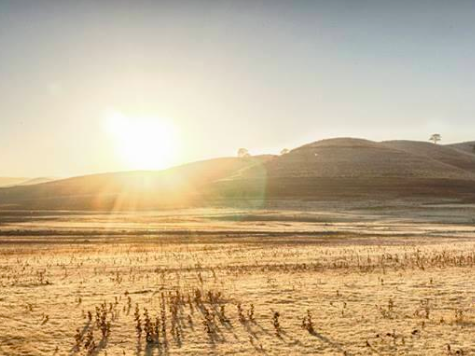The California Field Poll has released its latest study on voters’ opinions of the seriousness of the current drought and what steps the state should take to respond to the crisis. The poll found that 88% of voters believe the current drought is a serious problem, but most believe the answer is for farmers to reduce water usage by changing crops and using water more efficiently.
Voters are slightly more favorable to allowing the state to bypass existing environmental regulations protecting fish and the San Francisco Bay and Sacramento-San Joaquin river delta region if residents or farmers face serious shortages during dry years, but they support efficiency measures instead of building new infrastructure.
Whatever happens, voters by 67% to 27% favor voluntary water cut-backs over government-mandated water rationing.
California voters currently agree, by about the same ratio as during the big drought in 1977, that the state is going through a serious water shortage. A little more than 60%–about 10% higher than in 1977–believe the current drought is already very severe.
The current poll asked voters for their opinion of the same question they asked in 1987: “In dry years the state should be allowed to bypass environmental regulations protecting fish and the San Francisco Bay and Sacramento-San Joaquin river delta region if residents or farmers face serious shortages.” The results for the current survey was 49% agree and 44% disagree, versus voters in 1897 being equally split at 47% agree and to 47% disagree.
When informed that agricultural users consume 75% of the state’s fresh water supplies, voters believe by a 54% to 30% margin that farmers and ranchers could cut 10% of the state’s water usage by changing crops and being more efficiently without creating “real hardships.” Most farmers would reply that this answer indicates voters are naive about the realities of agriculture. Farmers and ranchers have a limited ability to change crops or feed, because of their investment in infrastructure. Nut trees and vines take up to 5 years of growth before they become productive and ranchers have a huge investment in their breeding lines for their livestock.
The most disappointing result from the poll is the lack of “consensus about whether the current situation is due to a lack of storage and supply facilities or inefficient use of existing water supplies.” About 37% of voters believe the water crisis is due to users not using water supplies efficiently versus 27% who think the crisis is because the state does not have enough storage and supply facilities.
Another 24% believe that both “factors are equally responsible.” Consequently, this year’s severe drought may not be severe enough to convince voters to adopt building the first above ground water storage in California in the last 40 years.
But there may be hope for future consensus. In a rather baffling result from the poll, Southern California voters who stand to gain the most from additional above ground storage had a much stronger belief the answer to the drought by 42% is more efficient use of water, compared to 27% for Northern California and 22% for the Central Valley. With Northern California voters now seeming to be resigned to adding infrastructure as a response, rationing water in very dry Southern California would probably convert these voters to supporting construction of more above ground storage.
The top takeaway from the Field Poll is that Californians haven’t yet been convinced by the current drought to build new infrastructure. Although California’s population has doubled from 20 million to 40 million since 1972, the state has not begun any above ground construction of new dams and reservoirs since the early 1970s.

COMMENTS
Please let us know if you're having issues with commenting.